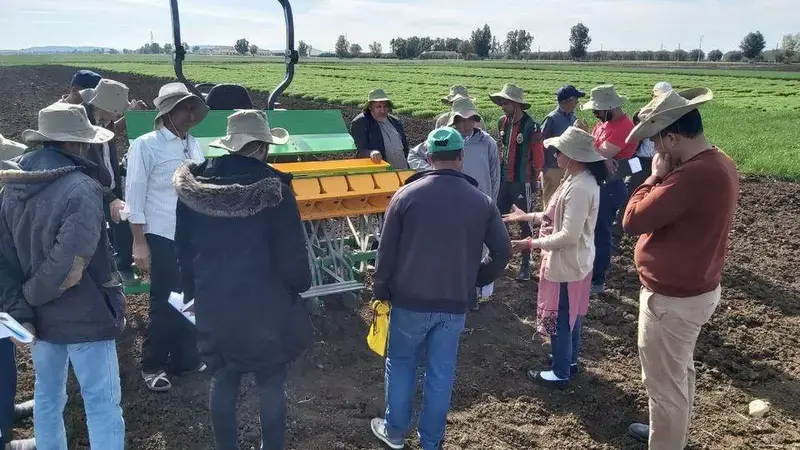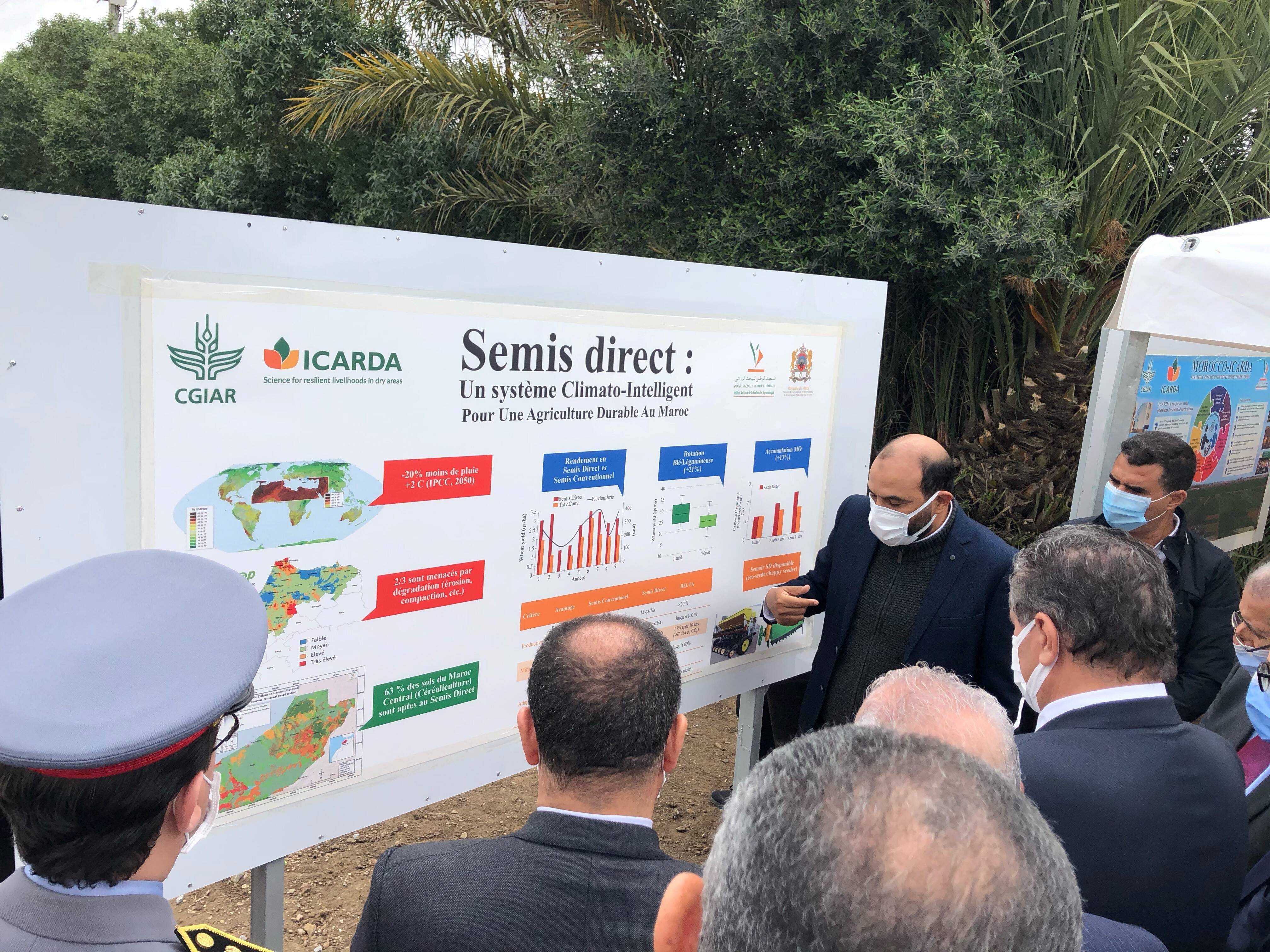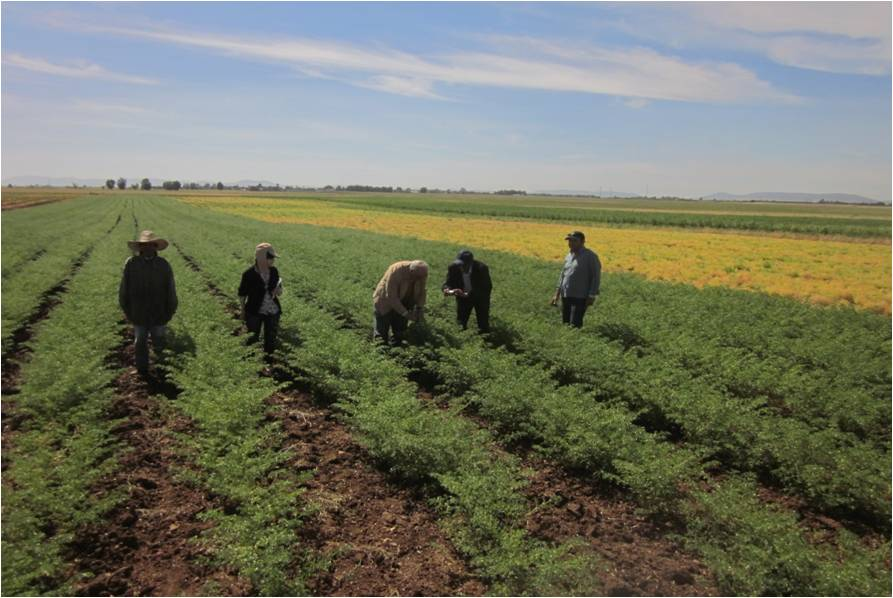Morocco to Convert 1M ha to Conservation Agriculture - how ICARDA/INRA Fit In

On November 12th, the Moroccan Ministry of Agriculture, Marine Fisheries, Rural Development, and Water and Forests announced that up to one million hectares of cereals will be cultivated under Conservation Agriculture by 2030.
Morocco, the only country in the region to practice Conservation Agriculture (CA) at scale, will now become a hub for dryland sustainable agricultural systems, boosted by decades-long joint research on CA between ICARDA and the National Agricultural Research Institute (INRA) of Morocco.
Over a long and productive partnership, ICARDA and INRA have investigated crop rotation systems of cereals, legumes, and forage crops under CA at the ICARDA/INRA Marchouch research station near Rabat and across INRA’s research stations in Morocco.
They produced clear scientific evidence that conservation agriculture is highly beneficial to the country’s agricultural system.
According to Dr. Nangia, this officially establishes CA as a scientifically sound system, trusted to deliver significant impact to the country.

New Science over old ways
In Morocco, cereal cultivation –often monocropping- is practiced on 4.5 million hectares of land, which is equivalent to 80 percent of the country’s arable land surface.
Year after year, farmers cultivate the same rainfed cereals -primarily wheat and barley- depleting soil nutrients, reducing organic matter, and eroding the land due to frequent tillage.
Adopting CA will reduce soil erosion by half, he explains. “In addition, each hectare cultivated will capture around 0.5 tons of carbon dioxide, in line with the Net-Zero carbon emission Pledge launched at COP26.”
Agriculture can strongly contribute to solutions to climate change by increasing ecosystems’ resilience. “In this regard, conservation agriculture has a massive role to play,” Dr. Moussadek explains.
Water way to go…
Climate change is severely disrupting rainfall patterns in the region. Less rain means reduced cereal yields and lower productivity and income for dryland family farmers.
Dr. Mina Devkota, an ICARDA agronomist who has conducted multiple CA experiments in Morocco explains that the joint ICARDA/INRA research has also proven that under variable rainfall conditions, CA produces more stable yields than crops cultivated under conventional systems.
A unified approach
The cooperation between ICARDA and INRA initiated in 2004 with the launch of the Moroccan Collaborative Grants Program (MCGP), has evolved and deepened over time, with conservation agriculture at its core.
Its main objectives are to stabilize harvests and livelihoods for small and medium-sized farmers and to restore severely degraded soils back to health.
Dr. Nangia explains that MCGP, now in its fourth phase, is doing a lot of work to bridge the yield gap in wheat-based production systems through improved CA-based agronomic innovations, increased genetic gains, and crop productivity.
Other key actors will amplify and support CA in the new Moroccan Strategy, specifically the CGIAR Research Program on Wheat (CRP WHEAT), the Arab Fund for Economic and Social Development (AFESD), the World Bank, and the CGIAR ‘Excellence in Agronomy’ initiative.

CA addresses more factors than you might think
Dr. Nangia hopes that integrating CA within Morocco’s broader agricultural strategy will solve persisting bottlenecks that hamper adoption at scale.
Expensive farm machinery acquisition remains sluggish, for example, and there is a need to boost institutional support for farmers who might experience short-term income loss before reaping the benefits of enhanced soil quality under CA.
This income loss, explains Dr. Moussadek, is due to the fact that parts of the crop residue biomass must remain on the field to enrich the soil, rather than be used to feed livestock.
To include those varieties, however, sufficient amounts of forage seeds will need to be produced, and value chain frameworks established.
“Breeders must follow this paradigm shift by developing crop varieties adapted to conservation agriculture,” says Dr. Filippo Bassi, Senior Scientist, and ICARDA’s durum wheat breeder.
According to Dr. Nangia, new initiatives led by CGIAR - ICARDA’s umbrella organization - can address other bottlenecks.
“Through CGIAR’s new ‘Excellence in Agronomy’ and ‘CWANA’ projects, we can better inform the Moroccan government on how to translate their vision for CA into a step-by-step approach and provide tools and data for informed decision making."
INRA, Dr. Nangia explains, will remain the main research arm of the Ministry of Agriculture and collaborate with ICARDA to solve the remaining knowledge gaps.
Dr. Moussadek sees another significant benefit of CA, outside of stable cereal production and soil health.
“Conservation agriculture is not just about improved yields,” he concludes, “It addresses many more factors than you might think.”
------------------------
ICARDA is grateful for the productive partnership with the Institut National de la Recherche Agronomique (INRA Maroc) and the continued support of the Government of Morocco.
Further readings:
- Performance of elite genotypes of barley, chickpea, lentil, and wheat under conservation agriculture in Mediterranean rainfed conditions (repo.mel.cgiar.org)
- Can an incremental approach be a better option in the dissemination of conservation agriculture? Some socioeconomic justifications from the drylands of Morocco (repo.mel.cgiar.org)
- No-Till Farming in the Maghreb Region Enhancing Agricultural Productivity and Sequestrating Carbon in Soils (repo.mel.cgiar.org)
- Tillage System Affects Soil Organic Carbon Storage and Quality in Central Morocco (repo.mel.cgiar.org)
